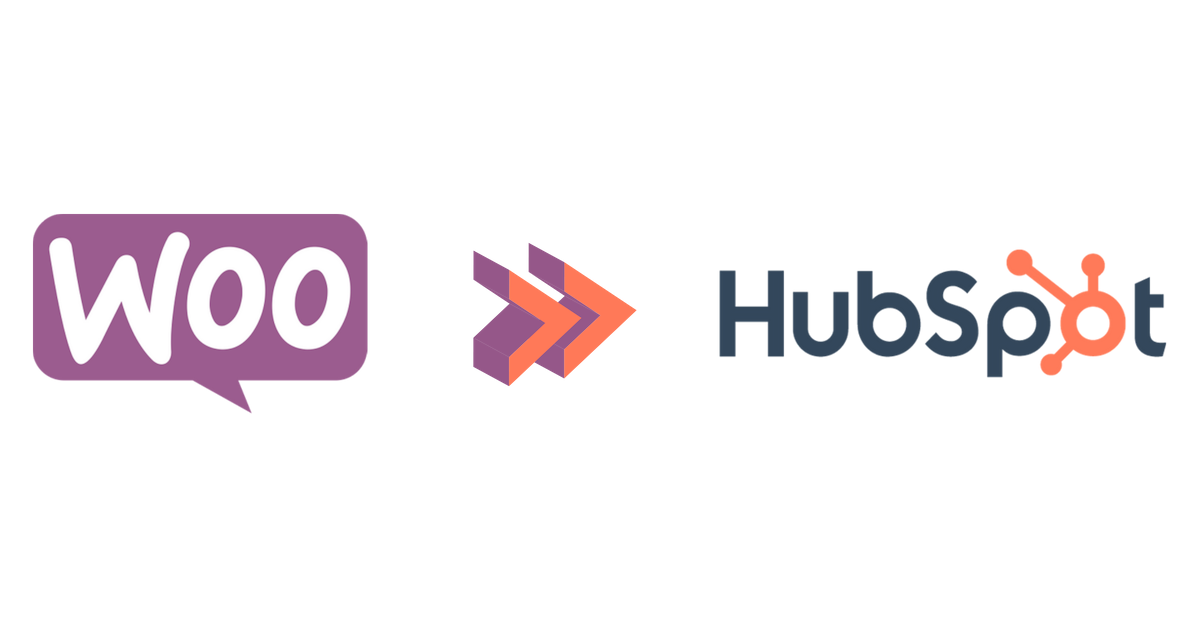What are WooCommerce and HubSpot?
WooCommerce is an eCommerce plugin for WordPress sites – essentially, it allows you to transform your WordPress website into an online store. In fact, it's behind 37% of all eCommerce sites! The WooCommerce plugin is robust and can sometimes be difficult to master; but once you crest the peak of the learning curve, WooCommerce becomes an invaluable ecommerce tool.
HubSpot, initially billed as an "all-in-one marketing software," today focuses on helping businesses of all sizes grow. In recent years, HubSpot has branched out from its inbound marketing automation roots and added sales automation & CRM as well as customer service functionality helping to drive its rapidly growing user base and popularity.
How Do I Integrate WooCommerce and HubSpot?
Integrating HubSpot and WooCommerce creates an ecommerce marketing and sales powerhouse.
With no native integration readily available, HubSpot and WooCommerce integration can be achieved by using a third-party application like Unific. Once installed, you'll have the opportunity to begin creating a personalized experience for customers and syncing services and features from both HubSpot and WooCommerce. If you elect to download through Unific, you'll benefit from pre-mapped fields and pre-built workflows to help get you started with integration.
A majority of integration vendors require you to pay to integrate. However, some allow you to take advantage of free plans and begin paying for the additional services that you need as your business grows.
The Top Six Benefits
1. Sync Customers and Orders
The most straightforward benefit of the integration. You can utilize HubSpot WooCommerce integration to sync orders and customers, which opens up the many benefits we'll discuss below.
2. Create Dynamic Coupon Codes
Studies have indicated that targeted and dynamic coupon codes are one of the most useful tactics for increasing sales. With HubSpot WooCommerce integration, you'll be able to create, test, send and track promo codes to any customer (or customer group) you'd like. Targeted advertising like this allows businesses to market to customers on an individual basis, based on criteria such as past purchase behavior, interests or demographics.
3. Automated Workflows
Perhaps the most useful feature in HubSpot are workflows. You can build a series of actions (like email sends) that are initiated when a customer takes a pre-defined action or combination of actions, or when a status or field value changes.
Unific provides merchants free workflows (we call it our Ecommerce Marketing Essentials Pack) to experiment with once you've got WooCommerce and HubSpot syncing. These workflows follow best practices and are ready-to-use, meaning you don't have to waste valuable time planning out how you want to engage customers based on common behaviors, like first time orders or cart abandons.
4. Sophisticated Abandoned Cart Conversion
Another ecommerce "must-have" that HubSpot WooCommerce integration enables are sophisticated ways to use your customer and order data to segment and engage with cart abandons. In the case of Unific's integration, fields with abandoned cart product name, price and image URLs are synced to contact records, which helps automate abandoned cart rescue workflows. This means that even when potential customers leave a cart of items behind without a purchase, you can easily push an email to them with images of those products, their prices and a link right back to view their cart.
5. Multi-Store Support
If you have multiple stores on WooCommerce (or other ecommerce platforms) it's likely you would like to consolidate all of your customer and order data into a single HubSpot account.
First, confirm your integration vendor supports multi-store integration (hint, Unific does). Once connected, you'll be able to segment customers in HubSpot based on which of your stores they shopped at. Or you can cross-sell customers across your different storefronts if it makes sense. The key is that you are able to manage all of this from one HubSpot portal.
6. Critical Insights
Once you have connected WooCommerce to HubSpot, you'll marry critical customer and order data with marketing insights that can influence your future sales and marketing strategies. Now your teams can pinpoint your most valuable customers, most effective promotions, best performing products and more.
Some integrations can run ecommerce tests like RFM analysis (recency, frequency, monetary) and deliver the insights into your marketing platform.
Ready to integrate your WooCommerce and HubSpot portals?
If you're ready to get started -- you can sign up for a free Unific account today. It takes a matter of minutes to get your integration set up.
If you have any questions about Unific or how to integrate WooCommerce and HubSpot, feel free to start a chat with us on this page ... we are here to help!
Get a Free Customer History Analysis!
Identify actionable differences in your ecommerce customer behavior to focus your marketing efforts.

